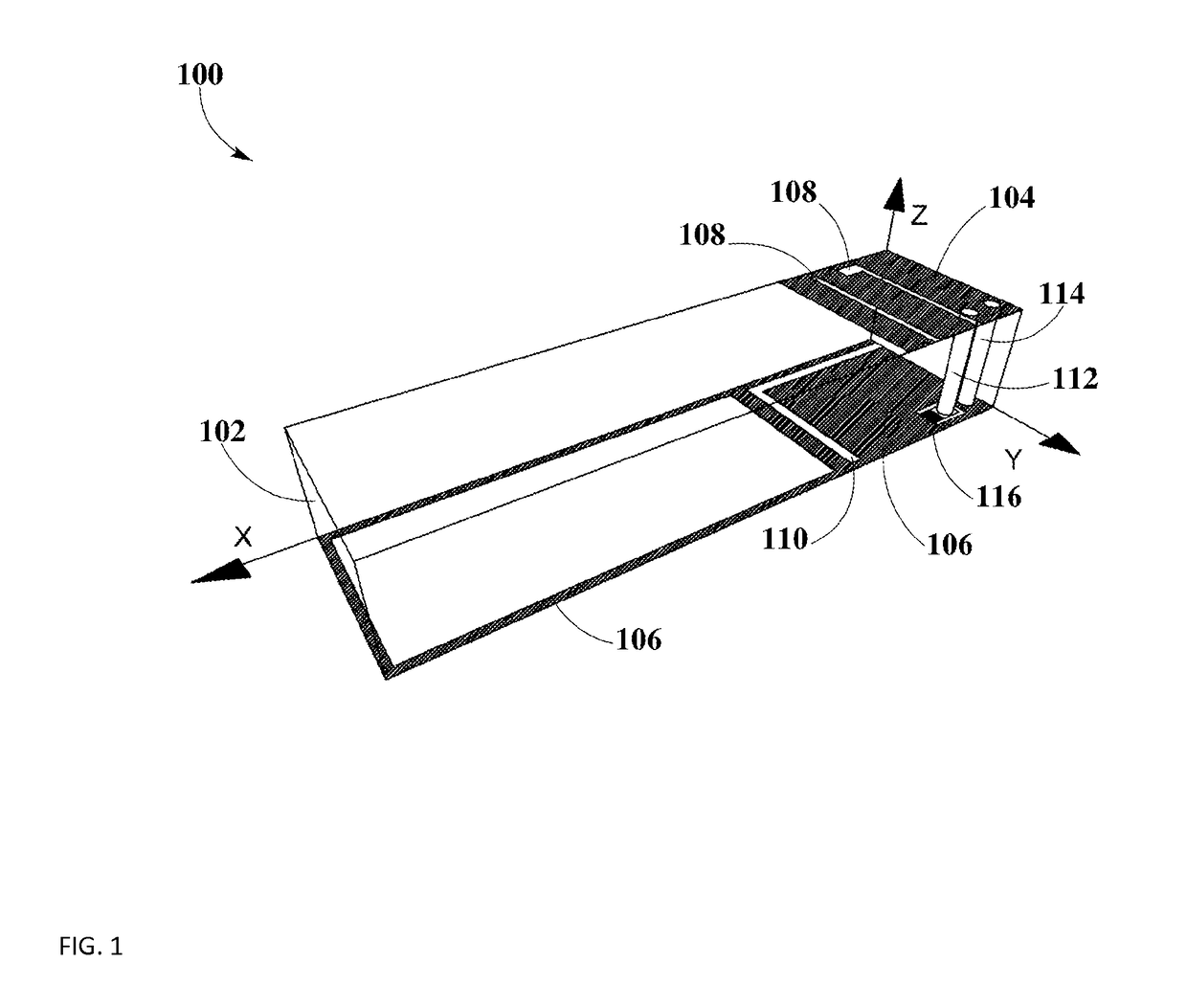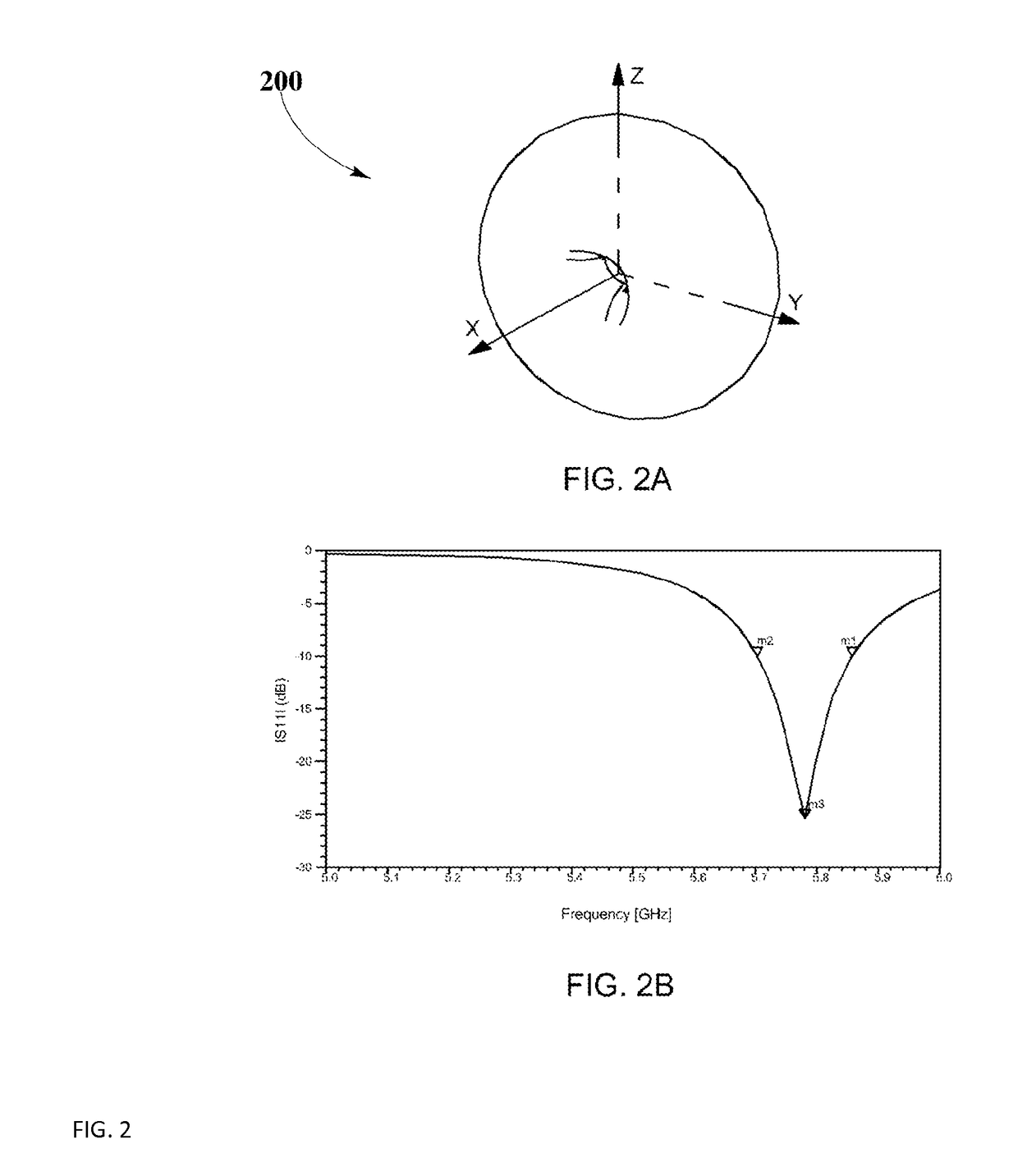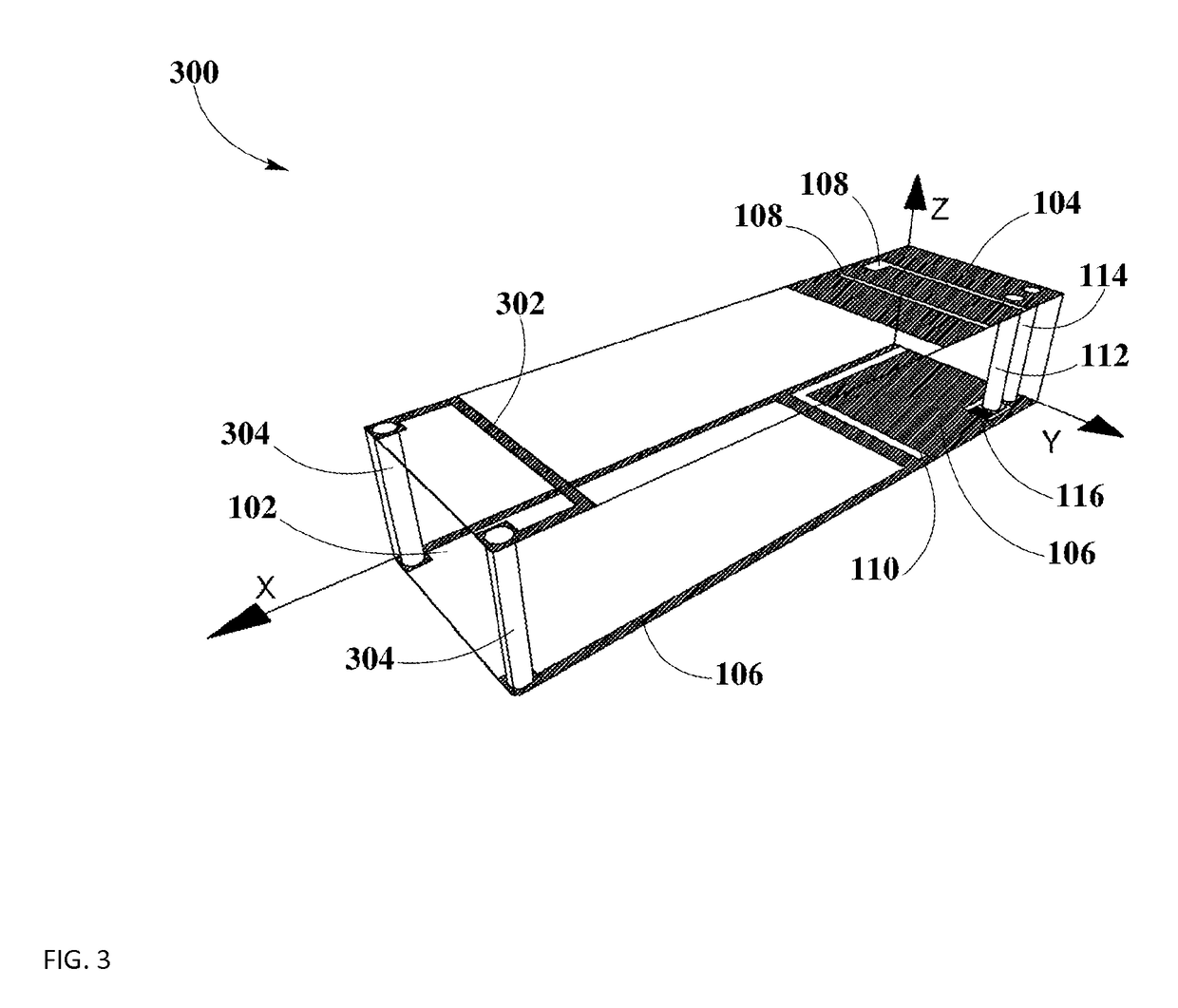Compact PIFA antenna
a technology of pifa antenna and compact structure, applied in the field of compact planar invertedf antenna, can solve the problems of complicated antenna selection and integration process, and achieve the effect of reducing the area of the ground, reducing the area of the antenna, and suitable impedance bandwidth
- Summary
- Abstract
- Description
- Claims
- Application Information
AI Technical Summary
Benefits of technology
Problems solved by technology
Method used
Image
Examples
Embodiment Construction
[0024]The present disclosure is here described in detail with reference to embodiments illustrated in the drawings, which form a part here. Other embodiments may be used and / or other changes may be made without departing from the spirit or scope of the present disclosure. The illustrative embodiments described in the detailed description are not meant to be limiting of the subject matter presented here.
Definitions
[0025]As used here, the following terms may have the following definitions:
[0026]“Wireless Power Transmission” may refer to the action of a transmitter capable of pocket forming for generating pockets of energy that may be utilized by a receiver for charging or powering an electronic device.
[0027]“Pocket-forming” may refer to generating two or more RF waves which converge in 3-d space, forming controlled constructive and destructive interference patterns.
[0028]“Pockets of energy” may refer to areas or regions of space where energy or power may accumulate in the form of cons...
PUM
| Property | Measurement | Unit |
|---|---|---|
| length | aaaaa | aaaaa |
| length | aaaaa | aaaaa |
| length | aaaaa | aaaaa |
Abstract
Description
Claims
Application Information
 Login to View More
Login to View More - R&D
- Intellectual Property
- Life Sciences
- Materials
- Tech Scout
- Unparalleled Data Quality
- Higher Quality Content
- 60% Fewer Hallucinations
Browse by: Latest US Patents, China's latest patents, Technical Efficacy Thesaurus, Application Domain, Technology Topic, Popular Technical Reports.
© 2025 PatSnap. All rights reserved.Legal|Privacy policy|Modern Slavery Act Transparency Statement|Sitemap|About US| Contact US: help@patsnap.com



